Thanksgiving kicks off the holiday season with delectable food shared with family and friends. Although holiday celebrations normally bring families together, with the pandemic still in effect, for many families, this year’s thanksgiving feast may be shared via video conference yet again. It goes without saying, the pandemic has changed the way many families celebrate the holidays, but the underlying meaning remains the same; Thanksgiving is a time to reflect on the importance of family, friends and to be grateful for the wonderful blessings in our lives.
When our bellies are full and the dishes are put away it’s easy to jump right to our phones and start shopping for those incredible Black Friday sales. So much of the holidays can be centered around gifts, however, a few years ago our family had an eye-opening Christmas experience which motivated us to change the way our family teaches gratitude.
One Christmas morning the kids woke with piles of presents stuffed under the tree and the looks on their faces were awestruck with bulging eyes and mouths agape in disbelief. Santa had delivered…BIG TIME. However, after about 30-minutes of unwrapping chaos we noticed something change in them. Excitement quickly turned to exhaustion as our kids were completely overwhelmed by the number of presents. That morning our kids seemed like little robots feverishly unwrapping gift after gift, then tossing them in a pile before reaching for more. After all of the money, time and effort that went into preparing a magical morning for them, they didn’t seem grateful for what they were receiving, and we knew something needed to change.
After that Christmas, we decided to take time each year to teach the importance of being grateful. It’s taken some time, but we’ve created this list of six simple tips your family can use to teach your kids the value of being grateful:
- Share a Rose every day - We discovered this article about a great exercise to practice gratitude at the dinner table. For example, you can ask your kids “What was your rose and thorn today?” A thorn is a not-so-good moment, something that challenged them; while a rose is a positive moment, something that made them feel good. If your child says, “My thorn is that Jenny didn’t want to play with me at recess and I felt sad.” It gives you an opportunity to connect with them and validate their feelings. Then you can ask: “So what was your rose for the day?” This makes your child reflect and appreciate something positive that occurred that day. It may sound simple, but when my kids are encouraged to reflect on something positive, they can usually remember a positive moment during the day that they’re happy to share. This simple exercise can help shift their perspective to one of gratitude and it’s so wonderful to see them smile when they remember a positive moment from their day.
- Write Thank You Notes - Seems simple enough right? No fancy stationery is needed, just a piece of paper and a pen will do. Many kids LOVE to draw and write and encouraging them to practice gratitude by writing a ‘thank you’ note to Grandma for taking them to the park, or their teacher for helping them with an assignment is a great way to teach gratitude. This article has some great tips about how to be creative with thank you notes. It only takes a few minutes per note and remember, it’s never too late for a ‘thank you’ card!
- Serve Others - With the holidays in full swing, it's important for kids to learn the value of giving to those in need. Kids can create homemade cards for family members and teachers. Last year our family made “blessing bags” filled with toiletries & self-care items for men and women who are homeless. The kids helped stuff the bags that were delivered to a local shelter. If you are looking for family activities that will teach kids the joy of giving this article has some ways kids can help others this holiday.
- Create a Family Gratitude Jar - A great tradition to start next year is a Gratitude Jar! Simply take an empty jar placed next to a stack of post-its and a pen and leave it somewhere centrally located in the house. Whenever someone is feeling grateful for something positive that happened to them that day, they jot it down on a post-it and leave it in the jar. Then, on New Year’s Eve, you sit as a family and review the notes left in the gratitude jar. It’s an excellent way to help connect as a family and reflect on all of the moments of gratitude that happened in your family that year!
- The 4 Gift Rule - One great way to inspire the value of being grateful this Christmas is to consider setting the four-gift standard in your house. The four-gift rule is a way for families to limit spending and encourage gratefulness. This article shares a great way to manage the stacks of gifts and encourages the four gift rule of:
- Something they want
- Something they need
- Something to wear
- Something to read
- Positive Vibes for the Win - When kids feel motivated and inspired to be grateful, they’re more likely to motivate others to be grateful as well. Obviously, we’re biased, but Goodtimer is an educational toy that families can use at home to help encourage kids to make good choices and follow the family’s rules. If there is an important rule in your house to be grateful, Goodtimer will consistently provide encouraging words, soft glowing green lights, and tangible incentives that will help motivate them to stick to it and try their best to follow the house rules.
We hope these six simple tips will help you teach your kids to learn the value of gratitude. Finally, this article includes some more wonderful tips to teach kids about gratitude. In particular, this quote does a great job of summarizing what gratitude means to our family:
“Living your life with gratitude means choosing to focus your time and attention on what you appreciate. The goal is not to block out difficulties, but to approach those difficulties from a different perspective. Appreciation softens us. It soothes our turbulent minds by connecting us with the wonderfully ordinary things, great and small, that we might otherwise take for granted.”


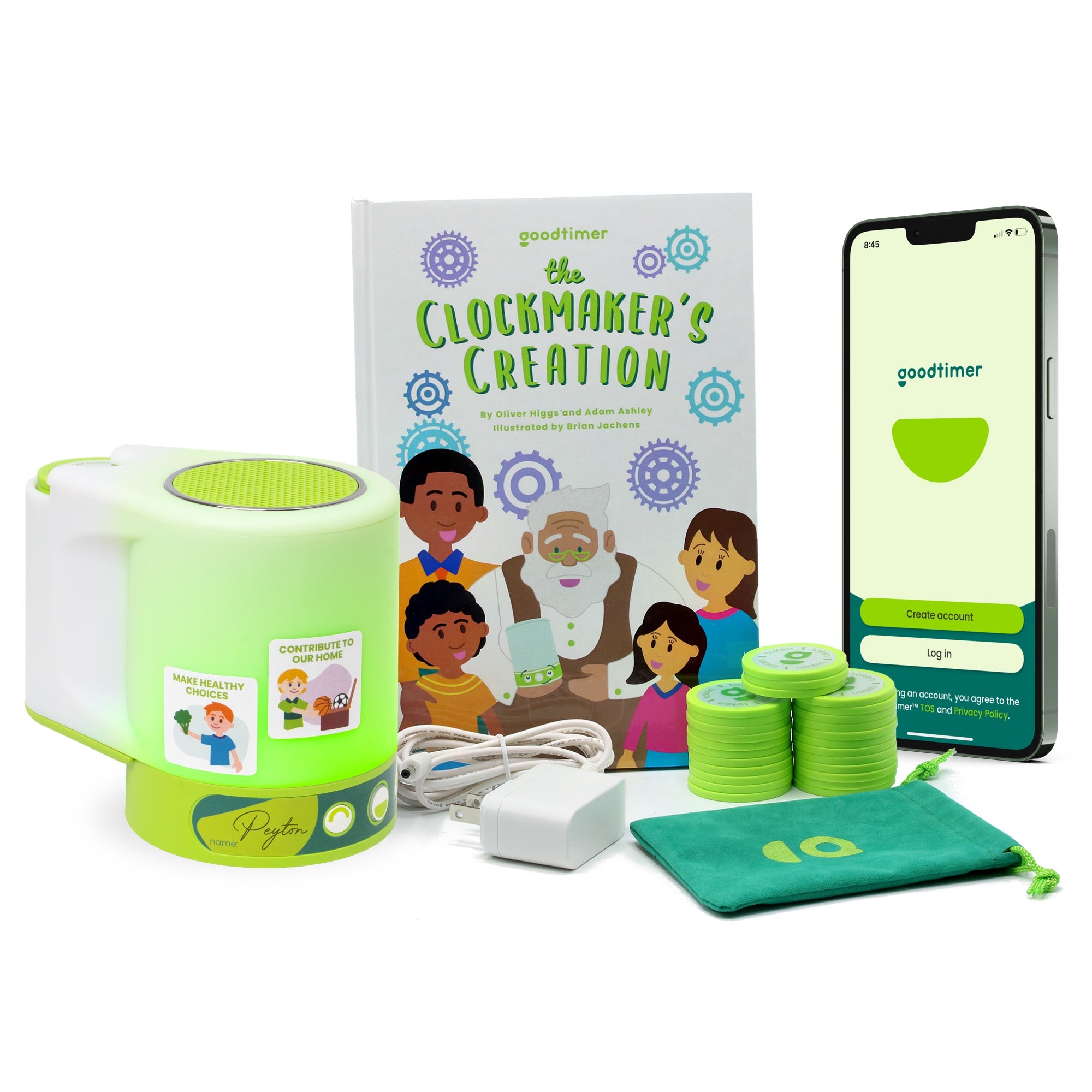
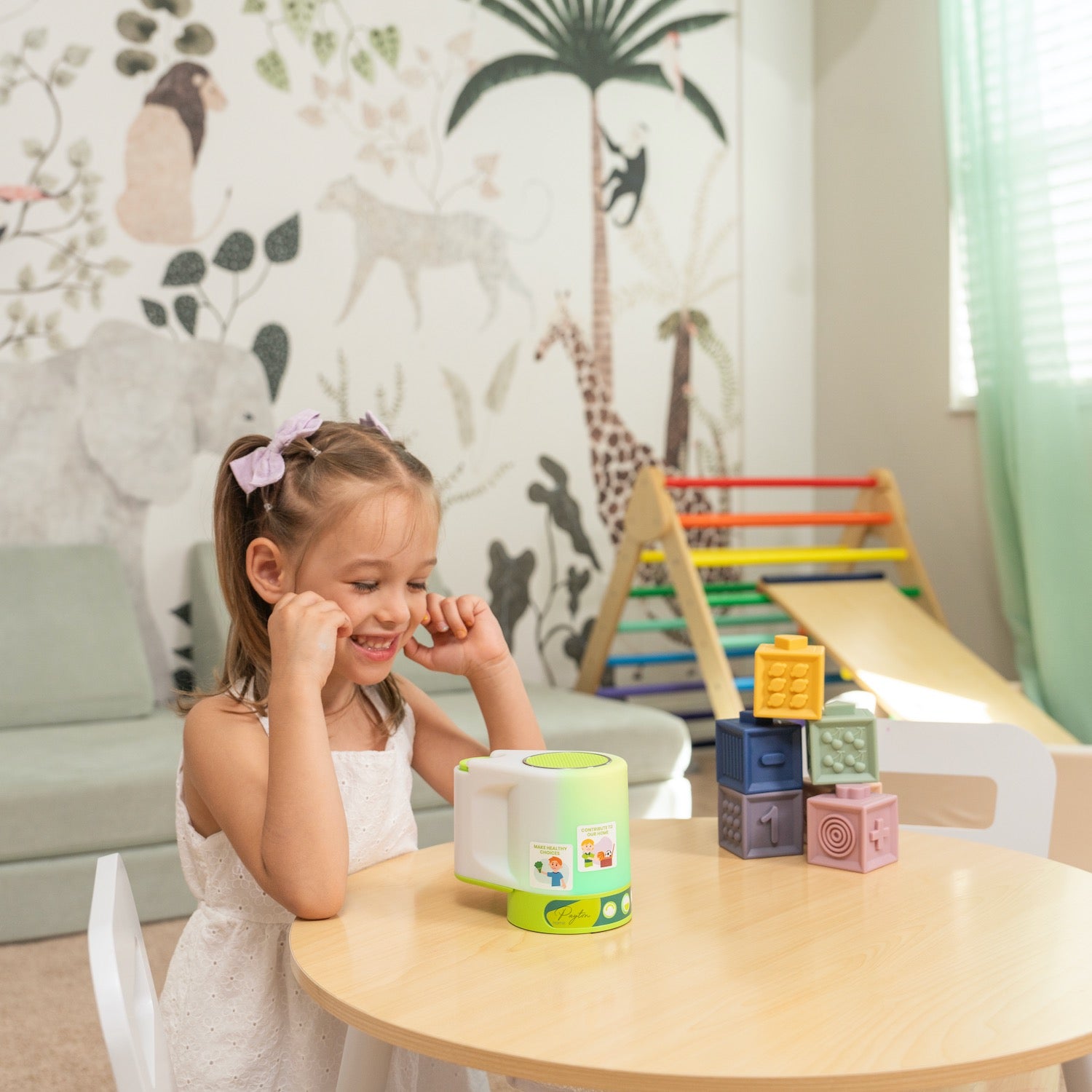
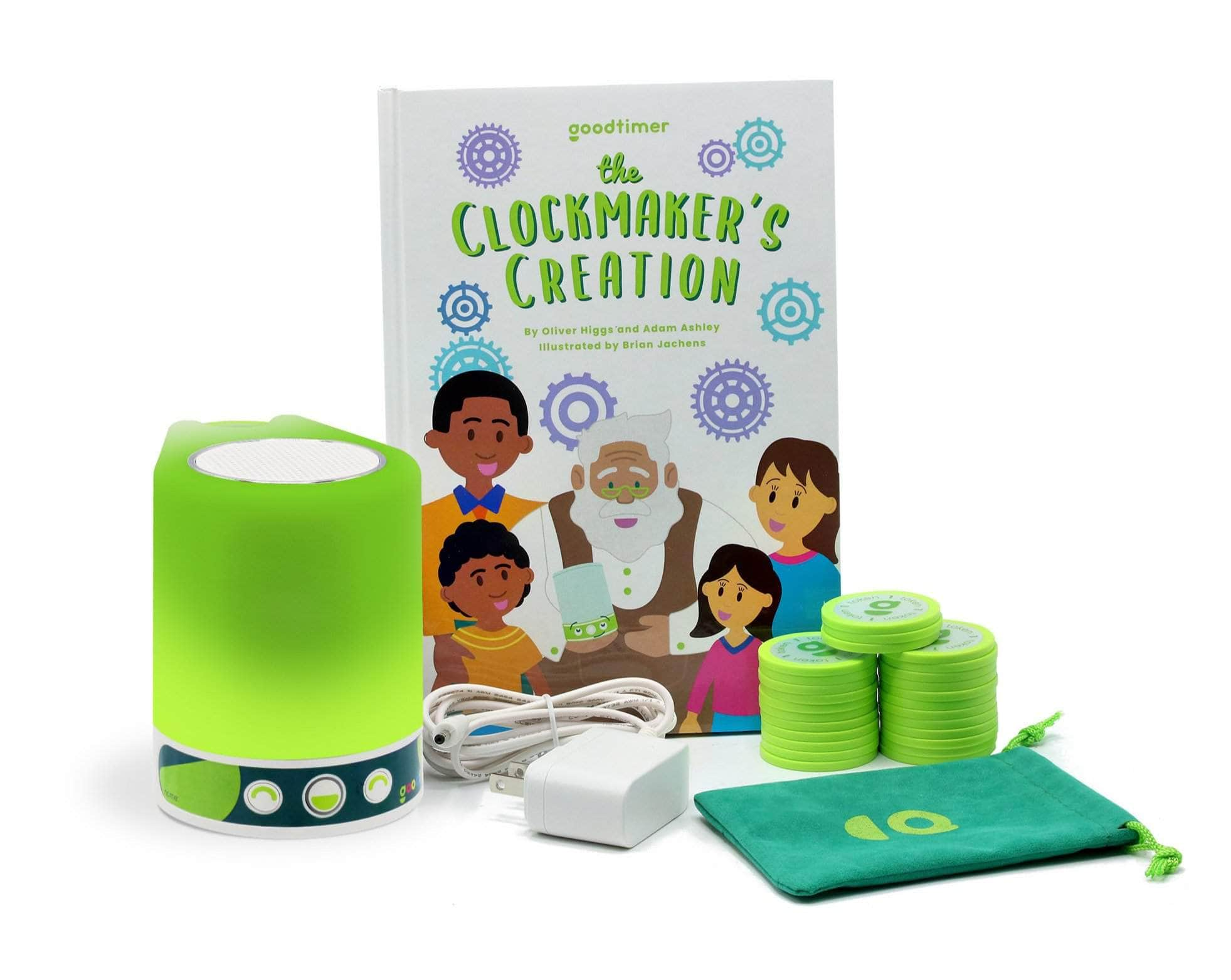


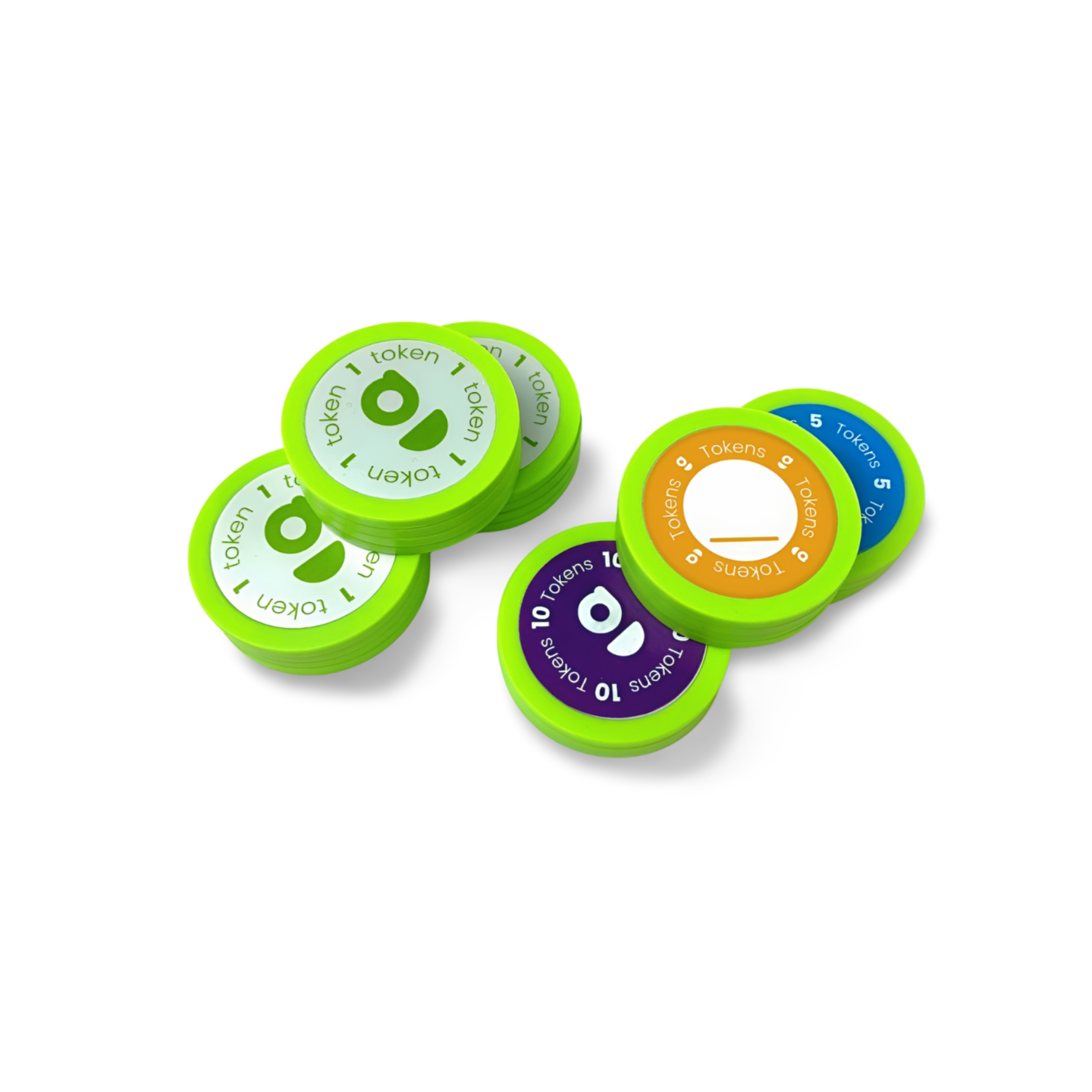

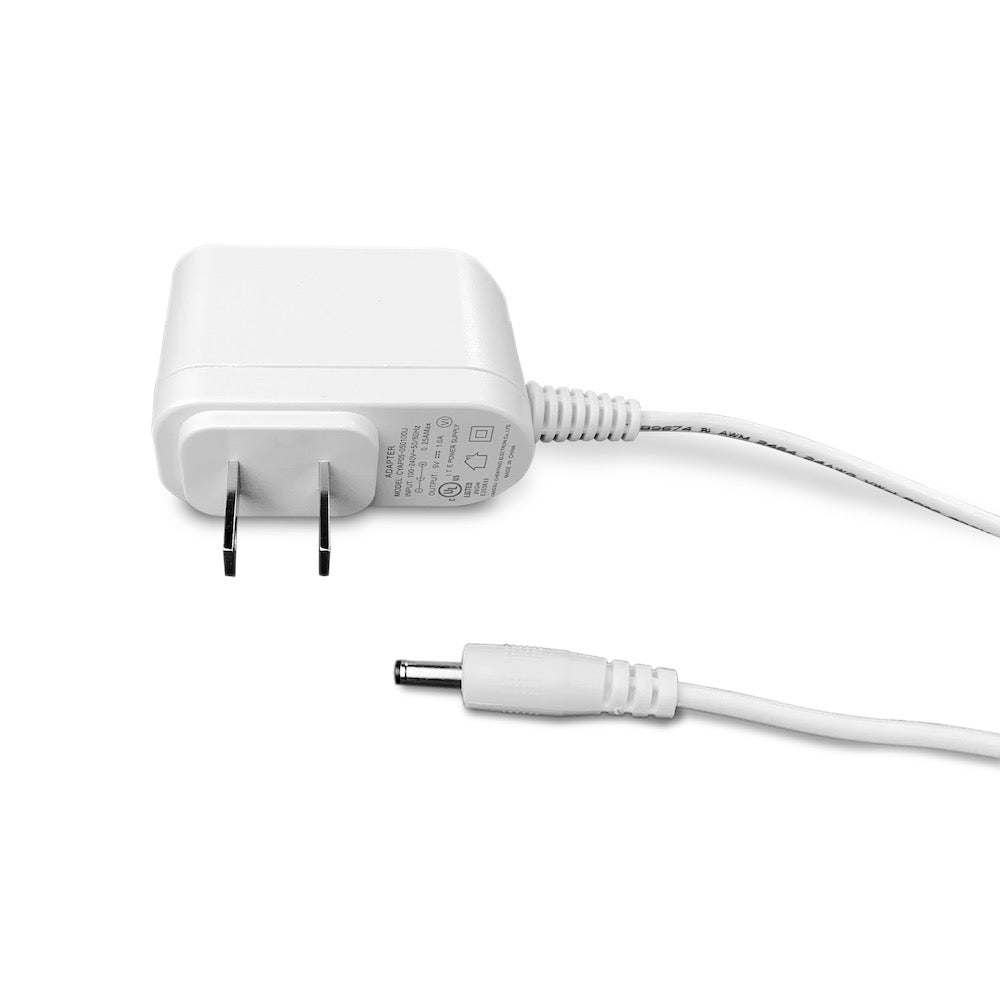
Leave a comment